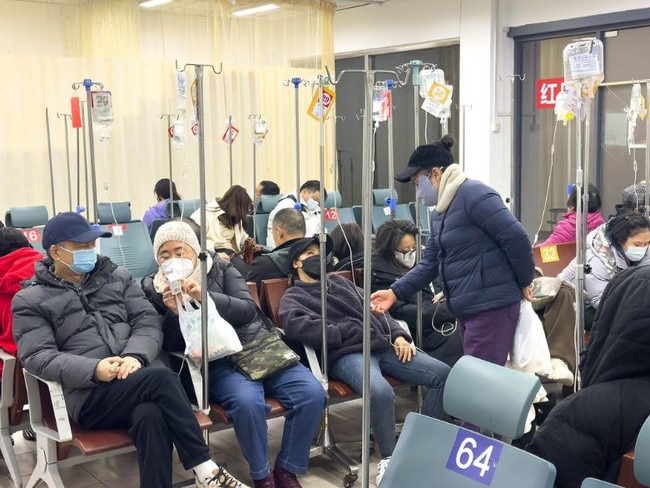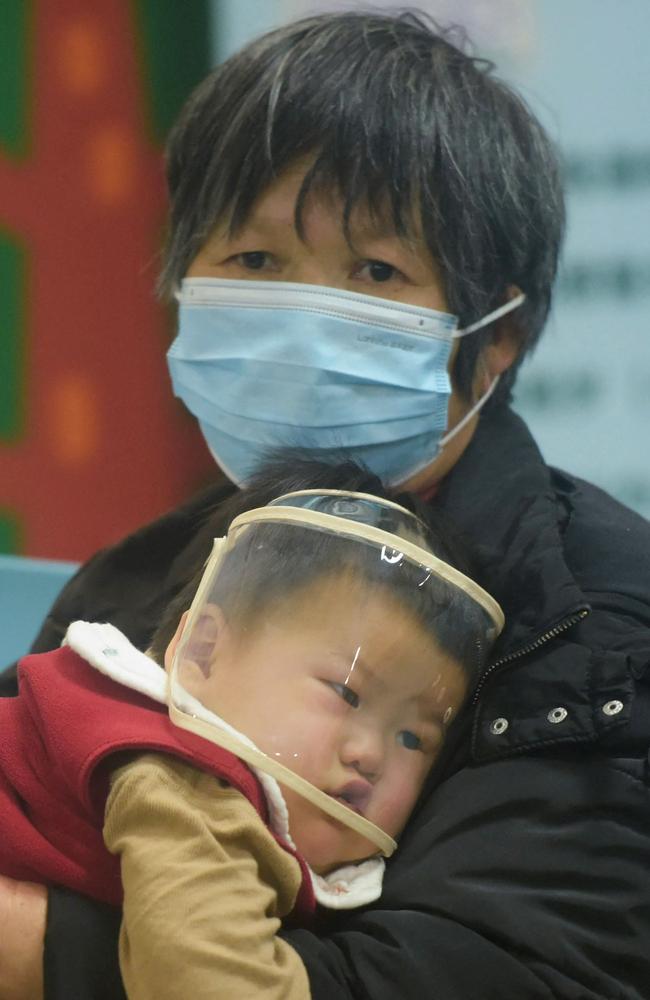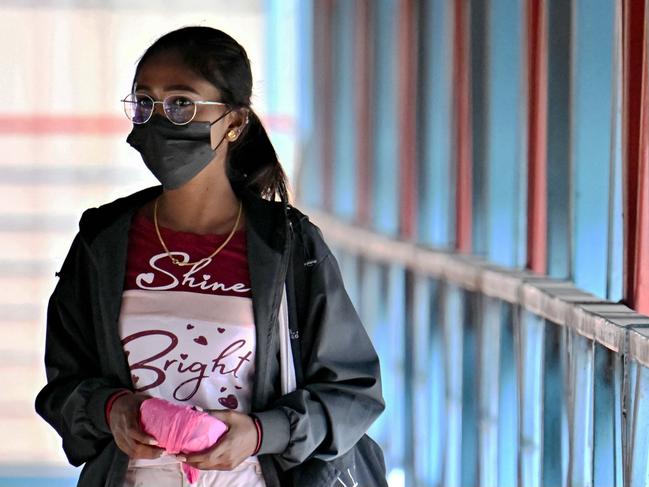The rise of metapneumovirus in China explained as outbreak spreads
Terrifying images shared on social media have raised fears of another deadly disease outbreak. But how worried should we be?
Illness
Don't miss out on the headlines from Illness. Followed categories will be added to My News.
Terrifying images shared on social media purportedly showing patients in China flooding local hospitals and collapsing in waiting rooms have resulted in rampant speculation that the world could be on the brink of another horrifying pandemic similar to that caused by Covid-19.
The images, which have not been independently verified, reportedly show a surge in patients in northern China seeking medical attention after contracting human metapneumovirus or HMPV – an upper respiratory infection that causes flu-like symptoms.
According to Chinese authorities, HMPV cases have been steadily rising and primarily affecting young children and the elderly, although authorities stressed that this is to be expected as cold weather grips the country and temperatures plunge in the freezing northern provinces.
Last week, Chinese foreign ministry spokesperson Mao Ning said that, while respiratory infections tend to peak during the winter season, “the diseases appear to be less severe and spread with a smaller scale compared to the previous year”.
Global health expert and medical doctor at YARSI University in Indonesia’s capital Jakarta, Dr Dicky Budiman, told news.com.au that, “the situation in China has shown a marked increase in HMPV infection and related hospitalisations, and also rises in various provinces of other respiratory infections”.
“However, I would like to stress that we have to be aware that HMPV is not a new virus, but a relatively under-recognised respiratory pathogen. It is often overshadowed by other more widely known respiratory viruses like influenza or respiratory syncytial virus (RSV),” he said.

Meanwhile, cases of HMPV have also been reported in other Asian nations in recent weeks, such as Indonesia, Malaysia, Hong Kong, India and Kazakhstan, as well as a string of countries in the northern hemisphere, including the US.
According to the South China Morning Post, in response to the outbreak, Aussie holiday favourite Bali – which attracts hundreds of thousands of Australian tourists every year – has “stepped up monitoring of foreign visitors, especially from China and Malaysia … requiring travellers from the two countries to fill out a health declaration form three days before their arrival to the island”, with the Jakarta Post reporting that a quarantine clinic has also been set up at the airport, with travellers with a fever above 38 degrees Celsius undergoing saliva swab tests.
What is HMPV?
While potentially worrisome, HMPV has been known to science for some time.
The disease was first found in the Netherlands in 2001 and usually occurs during colder months.
The fact that it has been in circulation for over two decades means that there is already a level of immunity among people who have previously contracted the disease – unlike Covid-19, which was a new virus that had never before infected humans.

What are the symptoms?
Symptoms of HMPV mirror those of other respiratory illnesses such as flu, and include a cough, fever, runny nose, headache and general aches and pains.
However, what makes it more deadly is that it can cause more serious illnesses like pneumonia or bronchitis – which can be fatal to immunocompromised patients, the elderly or the very young.
“The domestic reports from health officials report that individuals with HMPV infection are experiencing flu-like symptoms like dizziness and a persistent cough but these are non-specific and overlap significantly with those of other respiratory illnesses,” Dr Budiman said.
However, Dr Budiman added that early investigations have shown that this virus has more neuro-tropic symptoms, meaning it may have a higher likelihood of affecting the nervous system and infecting nerve tissue.
“The symptoms can include a sense of dizziness and cognitive issues, indirectly validating that HMPV could be more neurotropic,” he said.
There is currently no vaccine or antiviral medication for HMPV, although vaccines are being developed to help combat the disease.

Should people be worried?
Understandably, the recent footage from China has prompted questions about whether the world is ready for another deadly disease outbreak – after Covid-19 killed over 7 million people, according to data compiled by the World Health Organisation (WHO).
Dr Pandu Riono, a doctor at the Public Health Faculty at Universitas Indonesia, one of Indonesia’s top universities, told news.com.au that spikes in flu and acute respiratory infections (ARI) are usually seasonal – so the rise of HMPV at the end of 2024 and the beginning of 2025 is nothing unusual.
“There is no need to worry about HMPV because generally it is not fatal and can be cured,” he said.
Meanwhile, Dr Budiman told news.com.au that the potential for HMPV to become a full blown pandemic was still low.
“The cause of why the outbreak happened now is not solely based on one factor, but is related to contributing factors such as high mobility and population density in China, and many members of the community also have problems with their immunity caused by Covid-19 infections.”

Protect yourself
With scores of Aussies jetting off to Bali and other Asian destinations during the school holiday period, attention is turning to how to stay safe during the latest outbreak.
Dr Budiman said that HMPV may be on the rise as many common practices introduced during the Covid-19 pandemic such as wearing a mask and regularly washing hands have now become increasingly unpopular.
“The ongoing rise in HMPV cases in China stresses and underscores the need for awareness and ongoing research and identification in the field about the virus’ behaviour and the potential implications for public health,” he said.
While most cases now remain mild, the risk to vulnerable groups highlights the importance of prevention and timely medical intervention, because there is no specific treatment or vaccination to combat HMPV.
As such, Dr Budiman stressed that early detection and management, including supportive care to patients such as adequate rest and hydration, is paramount.
“Preventive measures are crucial including wearing masks, frequent hand washing, proper ventilation and avoiding crowded spaces,” he said.
“These are all very important to minimise the impact.”
Aisyah Llewellyn is a freelance journalist based in Indonesia
Originally published as The rise of metapneumovirus in China explained as outbreak spreads




